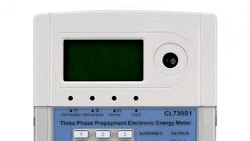The smart grid, a modernized electrical grid that leverages information and communications technology (ICT), is revolutionizing the way electricity is delivered. One crucial technology that is driving the efficiency, reliability, and sustainability of the smart grid is edge computing. By bringing computation and data storage closer to where it's needed, edge computing enables real-time processing and decision-making, making it an ideal solution for smart grid operations.
Understanding Edge Computing
Edge computing refers to the practice of processing and analyzing data at or near the source, rather than sending it to a centralized cloud or data center for processing. In the context of the smart grid, edge computing involves deploying small computing devices, known as edge devices, at various points in the grid, such as substations, distribution transformers, or even individual smart meters.
These edge devices are equipped with processing power, storage capabilities, and connectivity, allowing them to collect, process, and analyze data in real-time. By performing computations locally, edge devices can quickly respond to changing conditions, make intelligent decisions, and take immediate action, all without relying on a remote server or internet connection.
Benefits of Edge Computing for Smart Grids
Edge computing offers several key benefits for smart grid operations:
- Reduced latency
By minimizing the distance between data sources and processing resources, edge computing significantly reduces latency. This is especially critical in applications such as fault detection and isolation, where quick response times are essential to prevent cascading failures. - Increased bandwidth
Edge computing reduces the amount of data that needs to be transmitted over the network, freeing up bandwidth for other applications. This is particularly advantageous in areas with limited network connectivity, such as remote substations or rural areas. - Improved security
Edge computing enhances security by keeping data closer to the source and reducing the number of potential attack surfaces. This is crucial for protecting sensitive grid data, such as load profiles and metering data. - Enhanced reliability
Compared to traditional centralized cloud computing, edge computing provides a more reliable computing platform. It is less susceptible to network outages and disruptions, ensuring the continuous operation of the smart grid.

(symbol image, credit CLOU)
Use Cases for Edge Computing in Smart Grids
Edge computing is being applied in various smart grid applications, including:
- Smart metering
Edge devices collect and process data from smart meters in real-time, enabling accurate monitoring of electricity consumption and identification of anomalies. This information improves billing accuracy, detects energy theft, and optimizes overall grid operations. - Distributed energy resources (DERs)
Edge devices control and manage DERs such as solar panels and wind turbines. They monitor DER output, forecast generation, and optimize DER dispatch to maximize grid efficiency and reliability. - Fault detection and isolation
Edge devices detect faults on the grid and quickly isolate them to prevent cascading failures. By monitoring grid parameters like voltage and current, and using advanced algorithms, abnormal conditions can be identified swiftly. - Cybersecurity
Edge devices play a crucial role in protecting the smart grid from cyberattacks. They monitor network traffic, detect suspicious activity, and take appropriate action to mitigate threats.
Takeaway
Edge computing is a critical enabler for smart grid operations, offering reduced latency, increased bandwidth, improved security, and enhanced reliability. By processing and analyzing data closer to the source, edge computing enables real-time decision-making and action, making it an ideal solution for the evolving smart grid.
If you have any inquiries or need further information about edge computing in smart grids, please do not hesitate to reach out to us. As a leading provider of innovative energy solutions, CLOU is at the forefront of edge computing advancements in the smart grid industry. Our team of experts is well-equipped to assist you with any questions or challenges you may have, and we welcome your valuable thoughts and comments. Together, let's explore how CLOU can contribute to optimizing edge computing in smart grids and drive the future of energy efficiency.
Until then, keep exploring the 'cutting edge' of edge computing in smart grids and stay charged with innovation!





All comments are moderated before being published. Inappropriate or off-topic comments may not be approved.